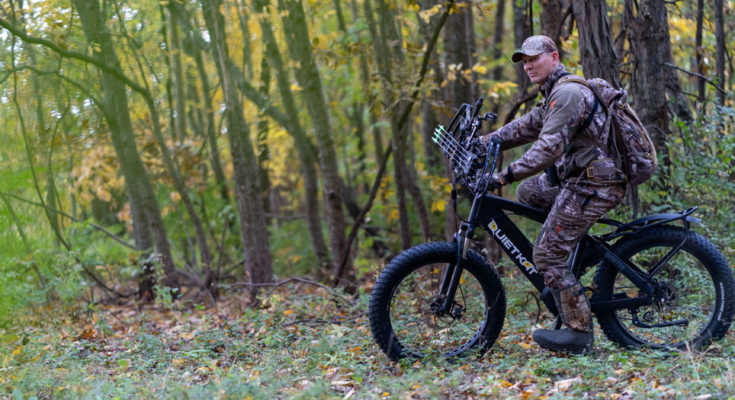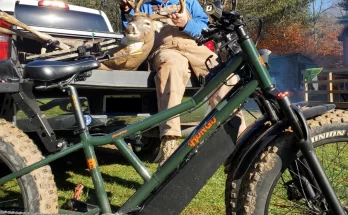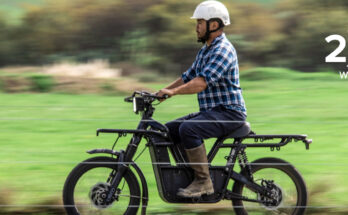e-Bikes On Federal Land
[Updated on August 29th – New Order allows eBikes on all department land – Full Order can be reviewed at the bottom of the post]
The lands owned by the federal government in the United States are called “federal lands”. These are mainly in Alaska and the Western United States. The laws and regulations regarding e-Bikes differ from one state to another in the United States of America.
Unfortunately, this is a very confusing area of discussion and keeps getting worse as the e-Bike market grows and the law has difficulty in keeping up with it.
The Federal Role Actions
The federal law only specifies the maximum speed that an eBike can go by motor power alone, but not when it’s ridden by a human being; which is how e-bikes are ridden! The Consumer Product Safety Commission then explained, that the federal law does allow eBikes to go faster than 20 mph when combining both; human and motor power.
This law differentiates at the federal level, e-bikes that can go up to 20 mph or less using motor power alone from other motor vehicles. Devices that meet the federal definition of an e-bike are controlled by the Consumer Product Safety Commission and must meet bicycle safety standards. However, according to a 2014 e-bike law primer, this federal law only covers the e-Bike’s product and safety standards.
States and Their Definition of an e-Bike
According to a recent article published on the 28th of March 2019 by the National Conference Of State Legislatures, only the District of Columbia and 33 other states define an e-Bike.
All of these districts and states mentioned above operate differently according to their laws. In the states remaining, e-Bikes don’t have a specific definition and might be considered as a “moped” or a “motorized bicycle”.
However, in Mississippi, there isn’t a clear definition for an eBike. An attorney general opinion though, points out that an eBike is considered a bicycle. Kentucky, on the other hand, also doesn’t have a clear designation for e-Bikes but the Department of Transportation announced an administrative regulation in 2015 that stated that e-Bikes are considered in the state’s scope of bicycle regulations.
The eBike Debate
As mentioned earlier, whether e-Bikes are or aren’t allowed on federal land is quite an argument and differs from one state to another. Even though the e-Bike industry is continuously growing, consumers and suppliers still find it very confusing on where they are and aren’t allowed to use their bikes.
The idea is that many authorities strictly classify e-Bikes to be motorized vehicles, restricting them to the use of roads and trails that are designated for motorized use. However, they’re obviously not purely a pushbike, because they have a battery and a motor to give you a boost as you pedal. Then again, neither are they a motorbike.
According to Tom Rice, a recreation planner, the U.S. Forest Service also agrees that e-Bikes are motorized vehicles and must stay on motorized routes.
The manufacturing and first sale of an e-Bike are controlled by the federal government, but its operation on streets and bikeways is in a state’s control. Many states require licensure and registration for e-Bikes or don’t enable them to be used in facilities such as bike lanes or multi-purpose trails.
The Three Classes of eBikes
Aside from the Federal and State rules, the BPSA (Bicycle Product Suppliers Association) has made enormous efforts to update the electric bike laws. As part of this they have formed a classification system, with three categories of e-bikes:
Class 1:
Pedal-assist only eBikes, with a maximum speed of 20 mph. No throttle included. Some states allow Class 1 e-Bikes to be treated as regular pavement or mountain bicycles and legally permitted them to be ridden where bicycles are allowed.
Class 2:
eBikes that have a throttle, and also a maximum speed of 20 mph. These are also allowed in most areas as regular bicycles, however, some states are aiming to enforce more restrictions.
Class 3:
Pedal-assist only e-Bikes, but with a maximum speed of 28 mph. No throttle included. Class 3 e-Bikes are specifically allowed on road-bike lanes and roads. Its maximum speed of 28 mph is achievable by most bicycles, however, it’s still considered too fast for regular bike trails and paths.
Areas eBikes Are Allowed
e-Bikes are welcome to be used anywhere that motorized vehicles are allowed, and that includes Forest Service and BLM roads and highways. They’re also allowed to be ridden on ATV routes, as well as single-track motorized trails.
Of all the 400 national parks around the country, only 40 of them allow bicycles. However, only 28 states have no special rules on whether or not e-Bikes are allowed to be ridden.
As the above could be a little confusing, this map would be very useful for e-bikers, as it represents how each state identifies its vehicles code for use on bike lanes, paths, and roads.
However, electric mountain bike (eMTB) access isn’t mentioned in the state vehicle codes in the map provided.. This specific issue would have to be consulted with your local land manager.
This book has been highly recommended by bikers who like to explore parks, as it covers all the interesting areas and mentions all the essentials needed to be known.
Of the specific district and 33 other states mentioned earlier that define e-bikes, some state laws, such as in Arizona, Georgia, Minnesota, Utah, Washington, and Oklahoma, strictly allow e-bikes on facilities such as bicycle paths or greenways.
Georgia’s state law clearly announces that “Electric assisted bicycles may be operated on bicycle paths.”
In Delaware, Florida, Iowa and Nebraska, and Vermont, e-Bikes are recognized within the existing definition of a bicycle, therefore there isn’t a difference when it comes to operation on trails.
California and Tennessee’s laws only specifically prohibit class 3 e-Bike riding on bicycle paths, but allow localities use on such facilities.
Conclusion
Each state or district has its own definition of an e-Bike and the regulations and restrictions that it has enforced on e-bikers.
Assuming the continuous growth of the e-bike industry, state legislatures will most likely continue to struggle with defining e-bikes, and further distinguishing them from motorized vehicles such as mopeds and scooters.
If you have your e-Bike ready and want to go riding in a certain national park, it’d be best advised to give that park a call to check their rules regarding electric bicycles. You could also check the National Park Service website for updates on the matter.
After all, it’s better to be safe than sorry!
P:S. here’s the updated new Order # 2276 of August 29th 2019




